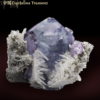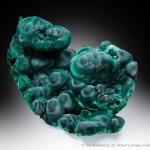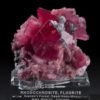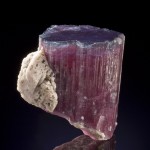Rock Legends & Mythological Origins
Sep 13, 2016
Humans have been collecting rocks and minerals since the beginning of recorded history. In fact, many of our favorite rocks and minerals have long been prized by our ancestors and cultural predecessors, and the legends and stories surrounding them date back to the dawn of time.
Collecting rocks and minerals is not just about gathering stones, it’s about gathering the rich data and history which surround them, as well. And, while many legends are merely that – legends – they may still provide interesting cultural background on rocks and minerals, which expands our insight into their inherent historical value. Just for fun – we’ve provided some of our favorite legends and myths, for your enjoyment!
 Both clear and smoky quartz crystals have historically held great value in Scotland, where their purported powers of protection made the stone popular in the creation of charms and amulets. Many men also carried “victory stones” – smaller crystals which were said to support victory of one’s clan in battle. These were passed down from generation to generation, along with an oral history which recounted the stone’s origin and powers.
Both clear and smoky quartz crystals have historically held great value in Scotland, where their purported powers of protection made the stone popular in the creation of charms and amulets. Many men also carried “victory stones” – smaller crystals which were said to support victory of one’s clan in battle. These were passed down from generation to generation, along with an oral history which recounted the stone’s origin and powers. - Though not technically a mineral, amber (a fossilized tree resin) was not only valued for the creation of personal adornment – in ancient India and Egypt, it was also prized as a sacred incense, as it was believed to purify temples and palaces. The burning of amber for purification is a practice which has long since continued, within various religions throughout history.
 Early Egyptians associated malachite with the goddess Hathor, an ancient deity featured prominently in the creation story, and said to embody the concept of abundance. She was also worshipped by miners, who would call of her for protection as they harvested malachite, turquoise, and lapis lazuli. The dark eye makeup created from fine malachite powder was also worn as an act of devotion by her followers.
Early Egyptians associated malachite with the goddess Hathor, an ancient deity featured prominently in the creation story, and said to embody the concept of abundance. She was also worshipped by miners, who would call of her for protection as they harvested malachite, turquoise, and lapis lazuli. The dark eye makeup created from fine malachite powder was also worn as an act of devotion by her followers.- According to legend, Alexander the Great’s belt was adorned with a brilliant chrysoprase stone, to which his success on the battlefield was attributed. Upon returning from a successful foray in India, he paused at the bank of the Euphrates River in order to bathe. A serpent removed the gem from his unattended garments, and escaped into the water – and Alexander the Great lost his powerful charm, never to conquer again.
 The Incas believed that rhodochrosite, which they called Inca Rose, formed from the blood of their former kings and queens. This connection to their royal ancestry led them to associate Inca Rose with the power to resolve inner conflict or problems with grace, and release the suffering of past lives.
The Incas believed that rhodochrosite, which they called Inca Rose, formed from the blood of their former kings and queens. This connection to their royal ancestry led them to associate Inca Rose with the power to resolve inner conflict or problems with grace, and release the suffering of past lives.- While Incan, Greek, and Arabic cultures all contain stories which associate opal with lightning or fire, our favorite legend is that of an Australian aboriginal tribe, the Wangkumara. Their legend explains how their people prepared a pelican for exploration, asking it to journey north, and bring back what it had discovered. The pelican stored the water and fish it would need for the journey inside its own beak, and traveled for days until it reached a hill scattered with colorful stones. Enthralled by their flashing beauty, he pecked at one – and the opal exploded in sparks, which landed on the dry hillside. The fire traveled down the whole coast, as the pelican returned to the people, carrying a mouthful of these strange stones back to the Wangkumara. The tribe extinguished the fire, and thanked the pelican for his great gift, which allowed them to cook fish for food.
 Ancient Egyptians believed that tourmaline originated in the earth’s core, traveling to the surface along the path of a rainbow, from which it gathered each color encountered along the way. This explains the stone’s beautiful variation in color, which is still highly prized by those interested in collecting rocks and minerals, even today.
Ancient Egyptians believed that tourmaline originated in the earth’s core, traveling to the surface along the path of a rainbow, from which it gathered each color encountered along the way. This explains the stone’s beautiful variation in color, which is still highly prized by those interested in collecting rocks and minerals, even today.- Turquoise was revered by the Aztecs as divine, and was reserved almost exclusively for religious adornment and use. In contrast, Native Americans believed that wearing turquoise established a direct connection to the wide heavens and abundant waters of the earth, and it was often embedded in silver jewelry worn every day.
- The Labrador Inuit have a legend which tells how light fell from the sky, and was trapped in the rocks on the ocean coast. One day, a traveling warrior stumbled across these same stones. Striking the rocks with his spear, he tried to set the light free. He released the Northern Lights into the sky, but some of the light remained trapped in the stone. This is what give labradorite its brilliant color, and stunning flashes of light.
Interested in learning more about collecting rocks and minerals? Check out our other articles in the Wisdom Pocket blog – or click here to peruse our new gallery of stunning specimens.